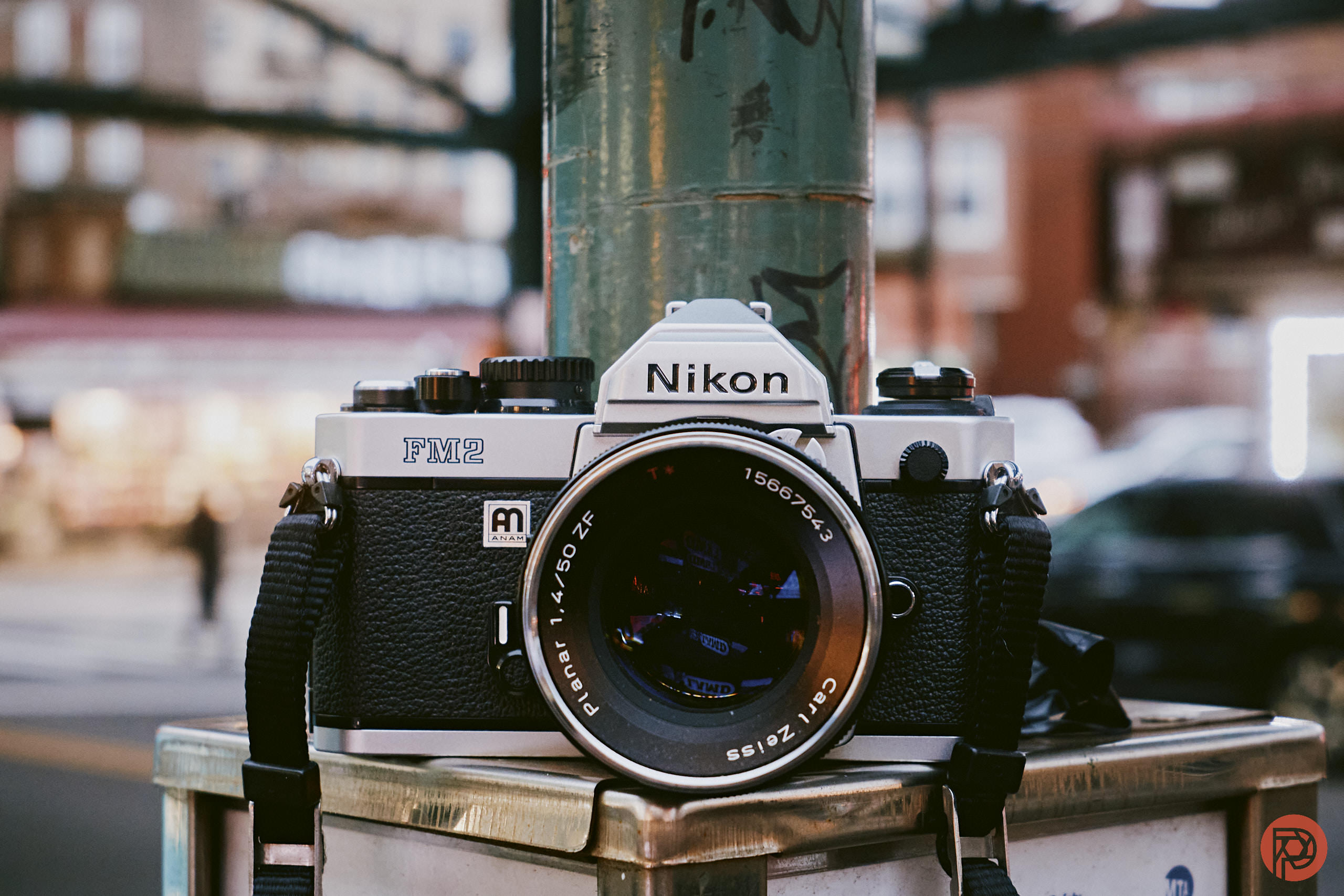
The Nikon Zf is truly one of the best cameras the company has made in the digital world. But when it comes to film, I’d argue that it’s the Nikon F2 instead. Plausible points can also be brought forth about that too. Yet, for many others, it’s the Nikon FM2. We can all agree that these cameras have possibly outlived their original owners. In the years past, I’ve been that scavenger at estate sales and pop-up stoop sales, swooping up these cameras. These are mechanical gems designed to live on for a very long time. Truly, they don’t make cameras like this anymore, and they probably never will. This isn’t the story of any Nikon FM2. The short story of the Nikon FM2 Anam and the Nikon FM2n Anam is often overlooked.
The Nikon FM2 Anam and Nikon FM2n Anam
The Nikon FM2 was made in Japan, for sure. But the Nikon FM2 Anam and Nikon FM2n Anam were made in Korea. Quite literally, Nikon shipping all the parts to South Korea where they were assembled in a factory. But other than that, there are no known functionality differences in the months of research that I’ve done. Instead, it’s really just the cosmetic badge that appears on the front. But it’s the type of cosmetic that photographers don’t necessarily care for.
Don’t get me wrong, photographers care about cosmetics. It’s why the Lumix S5 II X has blacked out font. It’s also why the Leica SL2s has the Leica logo blacked out too. Photographers tend to reach for brass cameras with black paint that wears away. It adds to the beauty of the camera. They also care about little things like a Black leica logo for cameras like the Leica M6P or something like that.
For sure, photographers care about aesthetics to the point where they’ll pay a lot more for them.
Ergonomically speaking, the cameras are all the same as their Japanese counterparts. There are ISO dials, shutter speed dials, rewind dials, shutter buttons, film advance levers, etc. They also all use rabbit ear Nikon F mount lenses with ease. And of course, they’re all built very well. These cameras are from an era where they could be made lightweight, reliable, and very durable without a major compromise on longevity. I truly still wish cameras were made like this.
The Nikon FM2 and Nikon FM2n are also all manual focus operated. So you’ll peer into the viewfinder and try to get focus. It’s not as nice as looking through a Nikon F2 or a Pentax 67, but it still surely is good even for someone legally blind like me. I wish that DSLRs had viewfinders like this, but I also remember Canon’s engineers basically shoving my feedback to the side when I gave it to them.
Of course, since these are film cameras, the image quality also depends on the film being used and the lenses you’re sticking onto the camera.
⭐⭐⭐⭐⭐
Rating: 5 out of 5.
We have to give these cameras 5 stars for pure longevity.
Made in Korea
Pretty much, the only thing that the logo on the Nikon FM2 Anam and Nikon FM2n Anam signifies is that it was made in Korea. Unfortunately, this doesn’t generate the fanboydom that stuff that’s made in Germany and Japan does. And in several instances, that’s just wrong thinking. There are many times where Leica has made things in Canada or Portugal that were considered better in the long run. Many photographers these days also think that the Fujifilm gear that was made in Japan is better. But they don’t realize that a lot of it is made in the Philippines.
So why isn’t there hype culture at least around Korean photographers? Obviously, Korean culture enjoys quite a nice share of mass-market appeal. One of my favorite bars plays a lot of K-Pop. I eat Korean Fried Chicken at least three times a month. I even occassionally use Korean-made lenses. But most of all, lots of people use Samsung phones. So why not this camera? Why isn’t there greater demand for these Korean-made cameras?
I’m guaging demand by the price point. If you do several different types of searches on eBay, you won’t find much differnce in the prices.
Maybe it’s that it just isn’t talked about much? Or perhaps it’s known that the cameras are essentially the same?
The Lasting Appeal
Despite one camera series being made in Korea and the other in Japan, both of these types of cameras have lasting appeal. The Nikon FM2 and Nikon FM2n are very affordable, lightweight, and simply just work. They’re found in attics, basements, and camera bags everywhere. Clean them up a bit, and they’ll fire without issues. These cameras were designed to keep working no matter what — and they represent a time when we didn’t think of products as disposable the way we do now.
Ergonomically speaking, the cameras are all the same as their Japanese counterparts. There are ISO dials, shutter speed dials, rewind dials, shutter buttons, film advance levers, etc. They also all use rabbit ear Nikon F mount lenses with ease. And of course, they’re all built very well. These cameras are from an era where they could be made lightweight, reliable, and very durable without a major compromise on longevity. I truly still wish cameras were made like this.
The Nikon FM2 and Nikon FM2n are also all manual focus operated. So you’ll peer into the viewfinder and try to get focus. It’s not as nice as looking through a Nikon F2 or a Pentax 67, but it still surely is good even for someone legally blind like me. I wish that DSLRs had viewfinders like this, but I also remember Canon’s engineers basically shoving my feedback to the side when I gave it to them.
Of course, since these are film cameras, the image quality also depends on the film being used and the lenses you’re sticking onto the camera.






